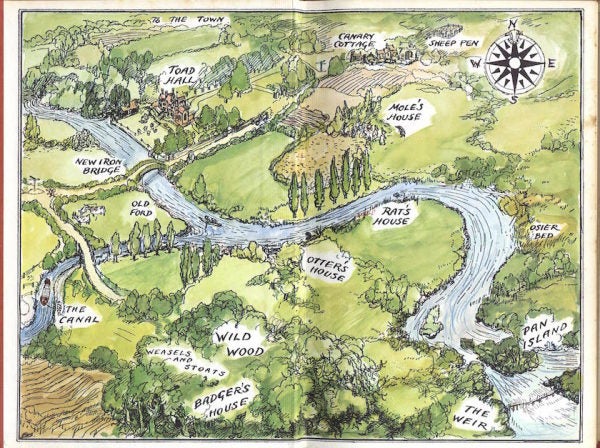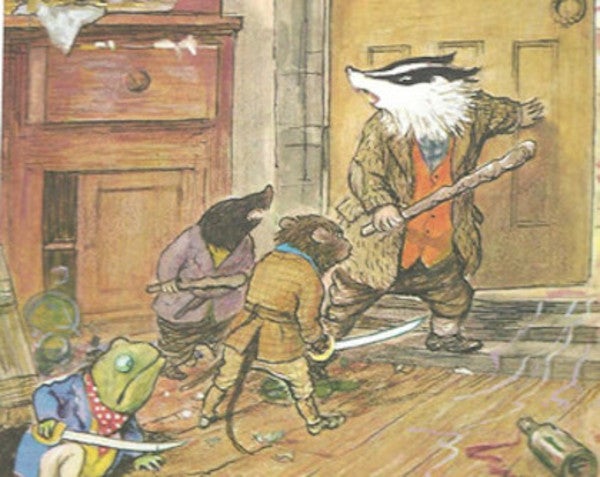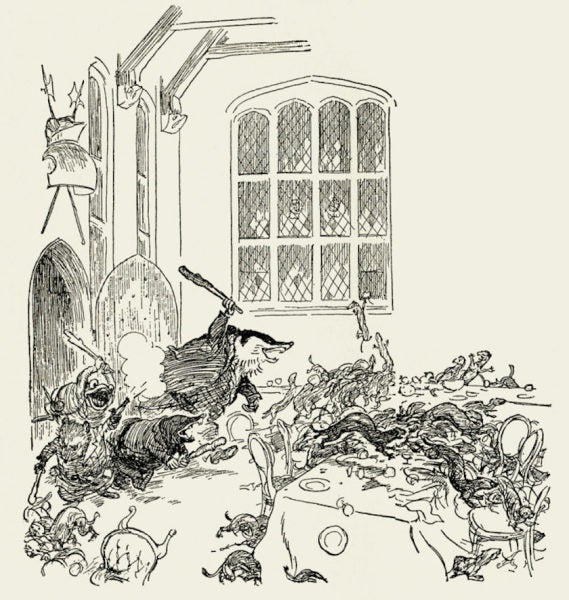When I was young, one of my favourite books was " Wind in the Willows. " Even today, as I approach 70 years of age, I can still relate to this book and, if anything, it means more to me now than when I first read it about 60 years ago. Why do I feel that we are cruising down the river with a weasel at the helm and the " riverbank" is no longer home?
Are we asleep at the wheel?
Having become enchanted with Chaucer's adventure on the Wunderlust II, I found myself increasingly drawn back to the wonderful work of Kenneth Grahame. Written to enchant, excite and amuse, it makes me sad that children today no longer see such work in their school libraries, much less sit back in bed and snuggle down to share the joy of a tale woven out of love and the soothing pleasure of beautiful words. But, even in this lovely tale of friendship, home and the importance of family, there was a sinister threat that lurked. The Weasels.
The weasels, stoats, and ferrets represented all the negative aspects of human society, such as greed, cunning, and disregard for the well-being of others. Now, who does that remind you of?

"The Wind in the Willows" was written by Kenneth Grahame and was first published in 1908. It was illustrated by E.H. Shepard. Ernest Howard Shepard was a renowned British illustrator known for his collaborations with various authors, including A.A. Milne for the "Winnie-the-Pooh" series.
It is a tale that weaves the themes of home and adventure. Much like Chaucer's serial story about the Wunderlust,
The Wind in the Willows captures the eternal struggle between our deep-rooted desire for cosy hearths and the siren call of uncharted waters. Now, I am a cosy hearth kind of person. Though I envy those who venture out of their comfort zone and sail forth into uncharted waters.

It is wholesome, a story of a band of ordinary souls seeking happiness. Unlike Chaucer, the only real dark cloud in the story was those weasels who had taken over Toad Hall. Toad was off having his adventure, and he was so busy having fun and then worrying about how to get out of the clutches of the police that he forgot to protect his home.
He left it unguarded and the sneaky weasels came in and took over.
Starting to sound familiar?
The problem we face today is that the Weasels have taken over Toad Hall and it is up to us to take it back.
But let's rewind a moment. Back to the beginning.
Our adventure begins with Mole, who's had his fill of spring cleaning and decides to trade his domestic duties for a taste of the outside world. Like many of us, Mole initially believes that embracing the allure of adventure is the answer to his restless soul. Yet, his heartstrings remain tethered to his cosy burrow, where tea and a warm fire await him. This tussle between the comforts of home and the call of the wild sets the stage for the main theme of the story. He loved the friendship and the joy of home.

Enter Ratty, a water-loving sort of chap, who embodies the struggle between love of home and love of adventure with every paddle stroke. His adoration for his riverside abode is palpable, and he often treads the fine line between the tranquility of his home and the excitement of the open waters.
The Otter family exemplifies the importance of family, responsibility, and the nurturing of the young. They represent the protective and nurturing sides of human character, reminding readers of the value of familial bonds and the care that goes into raising children.
Ah, Toad—the character who embodies the reckless spirit of adventure and the eternal quest for novelty. Toad's insatiable appetite for excitement frequently propels him into crazy misadventures, leaving his friends to clean up the mess. From his manic fascination with motorcars to his harebrained escape from prison, Toad's escapades take him further from his home while simultaneously drawing him closer to the very heart of his own folly.

While Toad's shenanigans keep readers laughing, the wise and reclusive Badger reminds us of the profound importance of home. As the embodiment of stability and tradition, Badger becomes a beacon of sage advice and a pillar of strength for his friends. His advocacy for the joys of a quiet life and the value of a well-tended hearth presents a different way of looking at life - in contrast to the whirlwind of Toad's exploits.
Just as Toad's wild escapades threaten his very existence, the story's climax highlights the danger of forsaking the warmth and security of home for the thrill of the unknown. Toad's ultimate return to his roots serves as a reminder that while adventure may be thrilling, it is often the embrace of familiarity that truly nurtures the soul. However, Toad returned to Toad Hall to find it a much-changed place.
The weasels had taken over.
The Battle of Toad Hall is a pivotal event in "The Wind in the Willows" where the main characters, led by Badger, defend Toad Hall against the weasels, stoats, and ferrets who have taken over his home in his absence. The battle is a climactic moment in the story and serves as a culmination of the themes of friendship, loyalty, and the struggle between good and evil.

Our governments seek to take our right to a happy childhood and tell us what to do and what to think. The expectation of a home with a hearty meal is under threat. Our ability to be silly and go to the wild places is under threat.
The riverbank will be off-limits and the willow trees replaced with wind turbines. The weasels are taking over Toad Hall.
And that, my friends, is unacceptable.
Is it time to fight back?

BLOG COMMENTS POWERED BY DISQUS































































